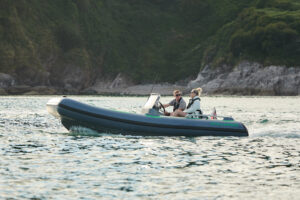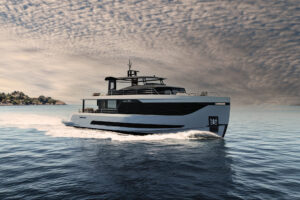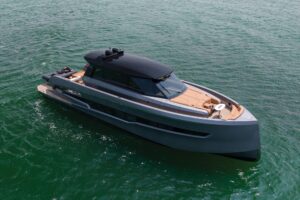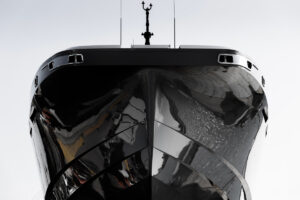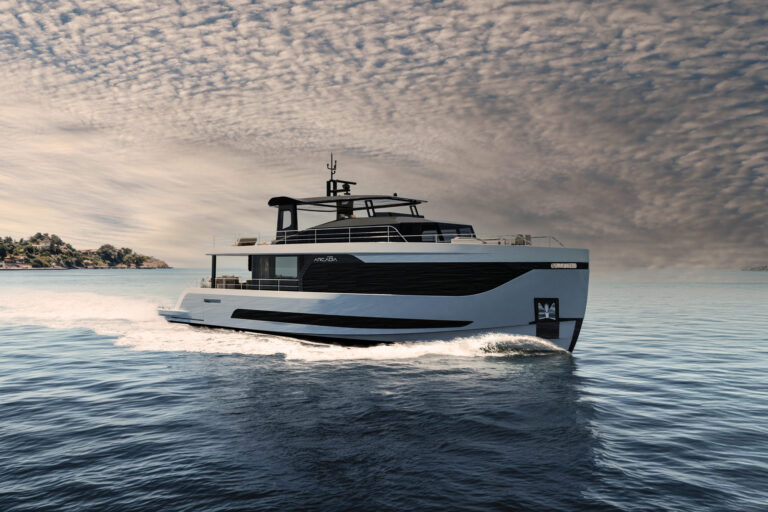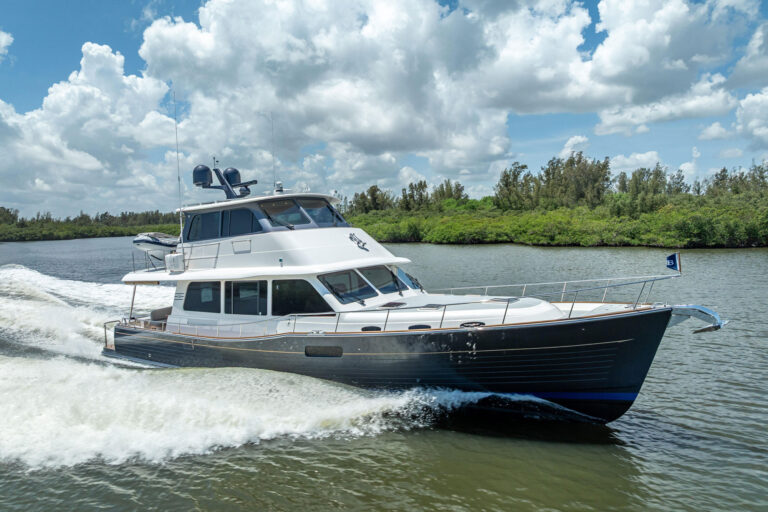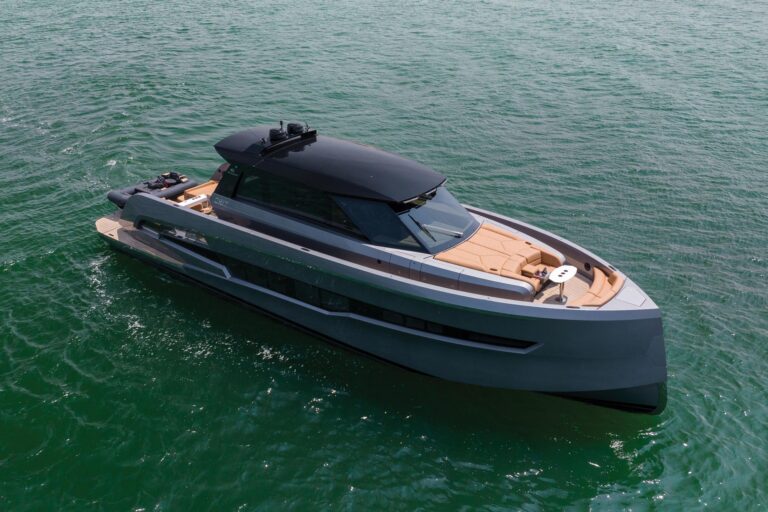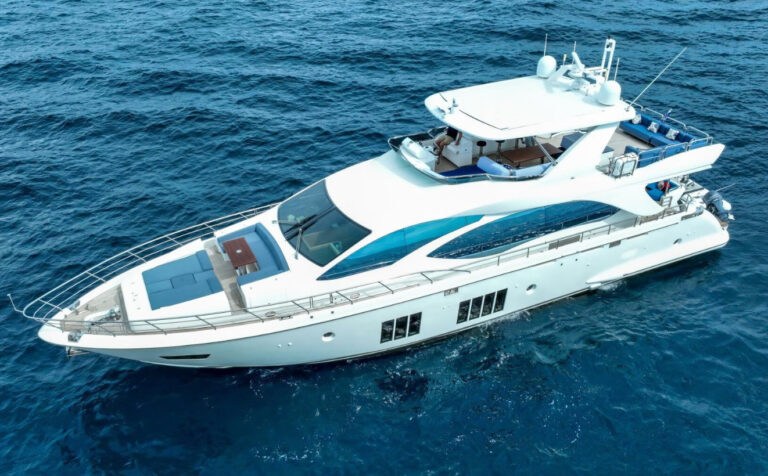
Today’s Gadgets Perform Multiple Functions
If I get to test all the new gear I hope to this season, the day will come when I can sit at a full-bore waterproof, sunlight-viewable plotter/radar/sounder on Gizmo’s flying bridge and use its combination touchscreen, button and knob interface to browse the Web and manage e-mail via harbor Wi-Fi and/or play streamed or silicon-stored audio and video. Meanwhile, the iPad that I generally prefer for those latter functions when lolling in my salon may well become my most versatile tool for monitoring the boat’s systems, planning routes, minding my anchor — while on or off the boat — and gosh knows what else. And ditto for my Android apps phone, which may also serve as a handy interface to a newfangled satellite messaging, tracking and distress gadget!
The techno-jargon for these phenomena is convergence, and we’re all experiencing it ashore as our TVs start streaming YouTube and our cars somehow connect to call centers that know where we are. As usual, the trend has come to the boating world a little later than elsewhere, the choices and installations are more complicated, and most of them are going to cost you. Let’s take a look at some specific products that illustrate the concept.
The Web-browsing chart plotter referenced in the opening sentence is Standard Horizon’s 10- and 7-inch CPN series introduced at the Miami International Boat Show in February and scheduled to ship in May (www.standardhorizon.com). Besides being the company’s most advanced multifunction display to date, the CPN1010i has built-in Wi-Fi so that, when you’re in port, you can use its bright touchscreen to, say, check the weather or browse local restaurant reviews, and if your e-mail needs require more than the touch keyboard, you can even use a wireless keyboard and mouse, since the CPN design includes Bluetooth. It also includes small stereo speakers, and an alternate audio-out port, and the ability to play music and videos.

While it’s great that a dedicated marine-navigation device can also perform iPad-like functions in a cockpit or on a flying bridge — where, in fact, an iPad won’t serve very well — the CPN innovation also illustrates how convergence can get more than two out of one plus one. For instance, some CPN features, like NMEA 2000 support, won’t be functional when first shipped, which is not unusual for such a radical design, but what’s unheard of is how the machine can use its Wi-Fi to make this and future updates virtually painless. Given that potential, how hard would it for a CPN to download updates to its C-Map charts (www.jeppesen.com) along with weather data overlays, or serve as a monitoring link when you’re ashore? Standard Horizon isn’t talking about such features quite yet, but these are the dreams of all the marine electronics developers it beat to market with an Internet-connected MFD.
Actually there’s an argument that Raymarine’s leading multifunction systems are also getting Internet-connected, though that company is taking a far different approach (www.raymarine.com). A new feature of its existing E-Widescreen and G Series — no software update required — is called Plotter Sync. You do have to equip your boat with a local Wi-Fi network, but then any Navionics Mobile charting app — which now includes iPhone, iPad, Android and PC versions — can wirelessly communicate with your Raymarine system (www.navionics.com). What you’ll see initially is automatic route and track synchronization, as in plan-a-trip-at-home, and, bada-bing, it’s on the plotter when you step aboard, and later the actual track of your adventure syncs to the phone when you’re ready to show off at the bar. As with the Standard Horizon’s MFD-to-Internet relationship, this MFD-to-mobile-to-Internet twist opens the gate to further integrations, be it receiving boat-sensor data on the tablet or bringing chart updates to the boat on your phone. And it’s worth adding that Navionics wants its charting apps to play nicely with all electronics that support its charts, and that C-Map has just introduced its own charting apps.
There’s a third, and truly radical, way that the Internet and consumer electronics may converge on yachts. Some believe that MFDs will rapidly slip away as fixed marine electronics evolve into a series of smart sensors, like NMEA 2000 depth transducers and Ethernet radar scanners all streaming data to whatever familiar assemblage of phones, tablets and conventional computers a boater wants to use. There’s some sense to the vision, but count me skeptical about rapid adoption because rugged, bright-screen consumer electronics and a willingness by marine manufacturers to free up their big sensor data have to come fi rst, and neither is a sure thing. However, this sort of architecture lends itself to several auxiliary systems that are available right now.

Digital Yacht’s new BoatraNet (www.digitalyacht.co.uk) is a dedicated server designed to feed rudimentary Navionics charting, a library of documents, streaming audio/video and more to any combination of onboard Wi-Fi devices, using just their browsers, not even an app. I logged my iPad onto a demo in moments and was immediately impressed with how it might improve life aboard not only for new crew and guests but also for troubleshooting skippers and technicians, and Digital Yacht has just gotten started. While the system already offers linking between all onboard mobile devices and a yacht’s high-power Wi-Fi-to-Internet hardware, integration with offshore communications as well as more built-in resources like weather feeds, plus data support for third-party apps, are all in the works.
Maretron is using a similar technique to expand its N2KView monitoring and control system to mobile devices on and off the boat (www.maretron.com). A live demo that let me view an engine room camera and switch on lights from my iPad thousands of miles away gave me a powerful sense of where this technology is going, even for midsize yachts. Meanwhile, this general convergence of apps and specialized electronics has taken an interesting turn when it comes to inexpensive low-bandwidth satellite communications.
Many boaters have already found Globalstar’s little orange SPOT Messenger (www.findmespot.com) useful for sending ashore canned messages and tracking info, and comforting as a backup distress tool. SPOT Connect offers all those functions in a tiny black-box form with a Bluetooth connection to a phone app that makes managing them much simpler and even lets you type in short custom messages. And an entirely new product, BriarTek’s Cerberus, combines the same ingenious app control idea with fast, reliable Iridium satellite messaging that is not only truly global, but also two-way. You could be anywhere on the planet using a familiar mobile device to text with family, business associates or even a search-and-rescue organization. BriarTek is also using Cerberus’ two-way abilities to provide a variety of services like position-aware weather alerts and custom news flashes.

So far I’ve discussed convergence largely in terms of melding the Internet and/or apps with formerly discrete marine electronics, but the latter are coming together too. There’s probably no better example than all the extra functions Simrad (www.simrad-yachting.com) has incorporated into its NSE multifunction display series, much of which I’ve gotten to test on Gizmo. Upgrading to Simrad’s latest autopilot processor let me dispense with the flying bridge control head and instead run the autopilot using small or large portions of the NSE 12’s bright color screen along with its versatile button and knob layout. Similarly, the SonicHub black-box A/V system that Fusion Audio builds for Simrad freed up more helm space while letting me use that big screen to peruse and manage a docked iPod Touch’s playlists of tunes and videos. C-Zone monitoring and systems-control technology can also join an NSE network, and in each case there are interesting integration pluses. For instance, when I build or select a route on the NSE 12’s plotter screen now, a pop-up asks politely if I’d like the AP to steer it.

There are many more examples — like the way Raymarine and Furuno/MaxSea (www.furunousa.com) are building complete camera management into their navigation suites — and most all these fixed-gear integrations could get even more interesting when they further converge with mobile apps and/or Internet. But I trust you’re getting the idea, though perhaps rolling your eyes vigorously. Indeed, convergence can be confusing, and can even seem outlandish at times, but there’s no holding it back. Please search my blog at www.yachtingmagazine.com/blogs for more details on all the products mentioned here and ongoing entries on the general subject, possibly filed from a chart plotter on my flying bridge.

